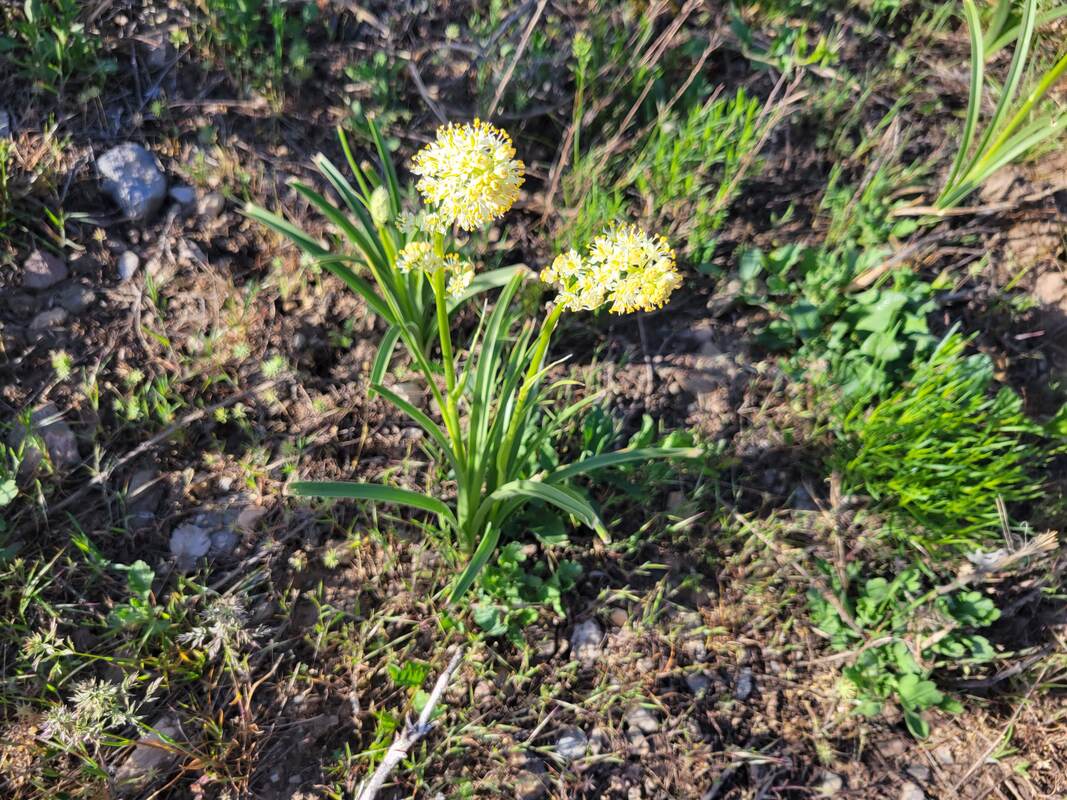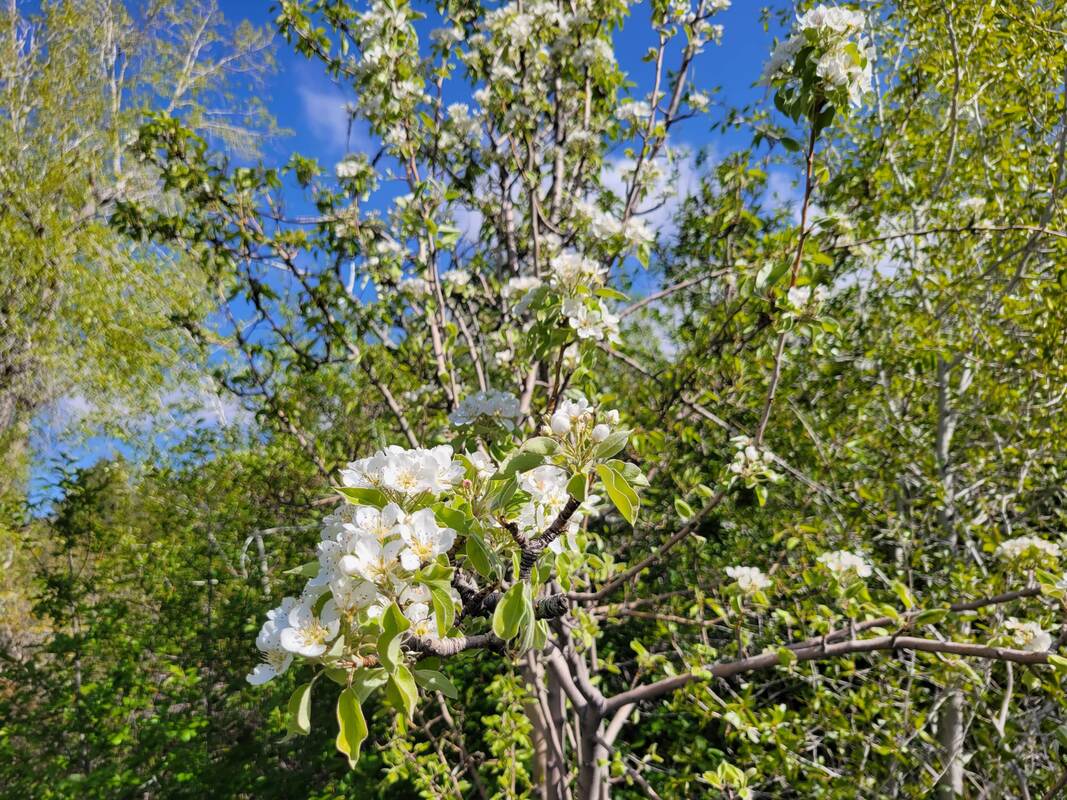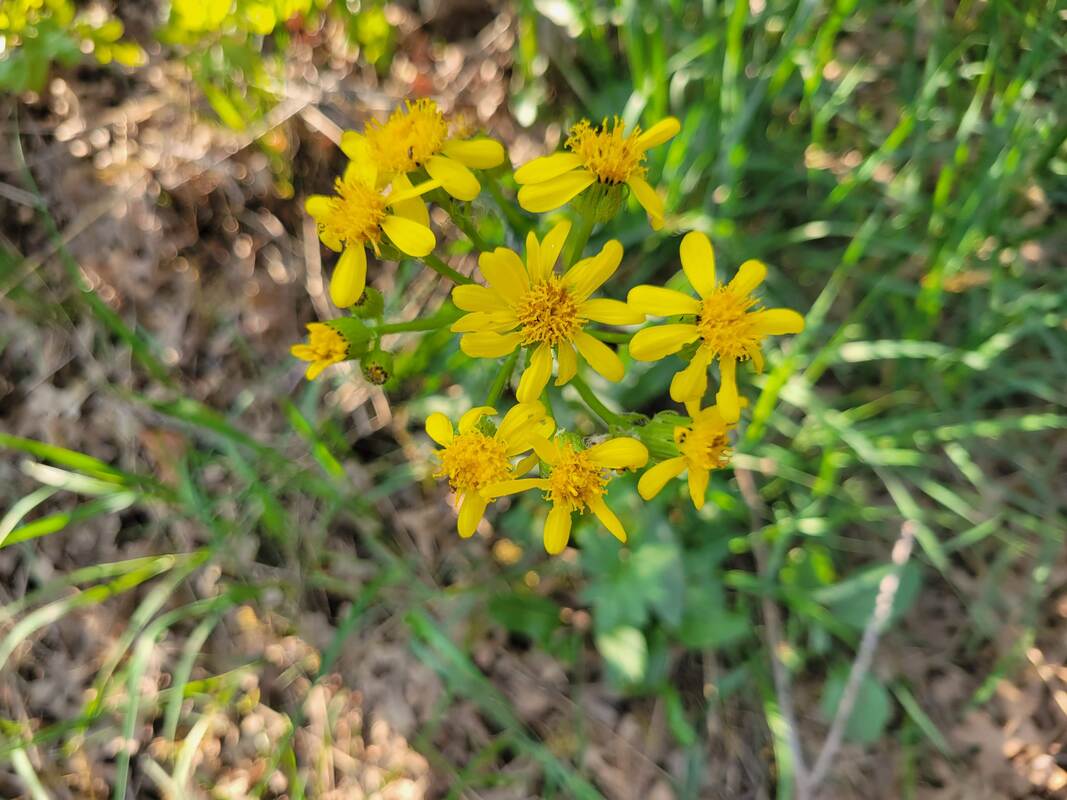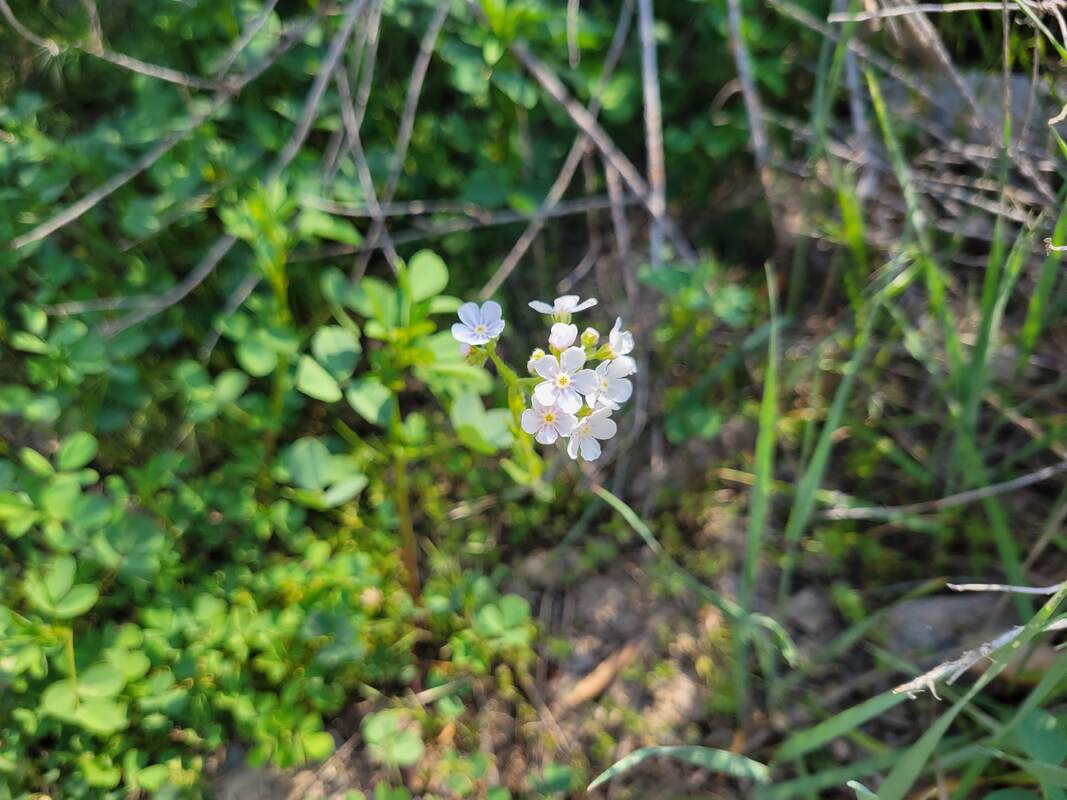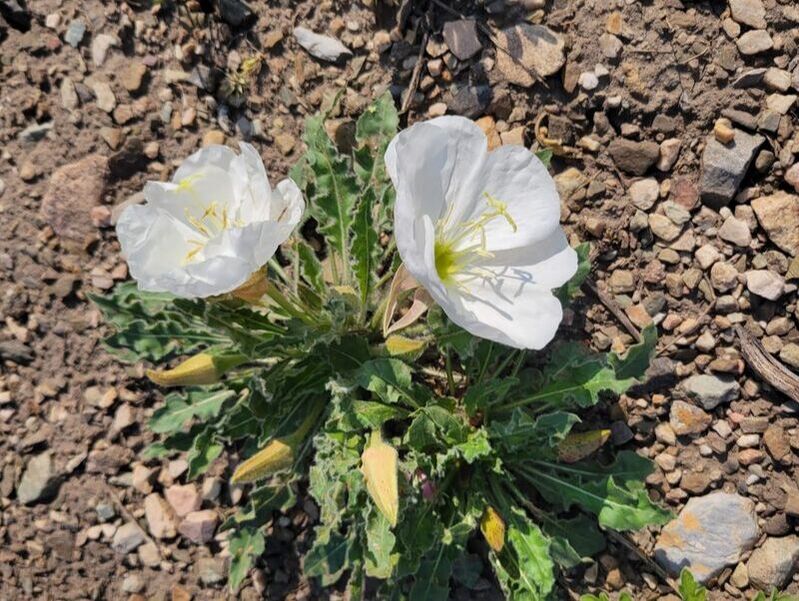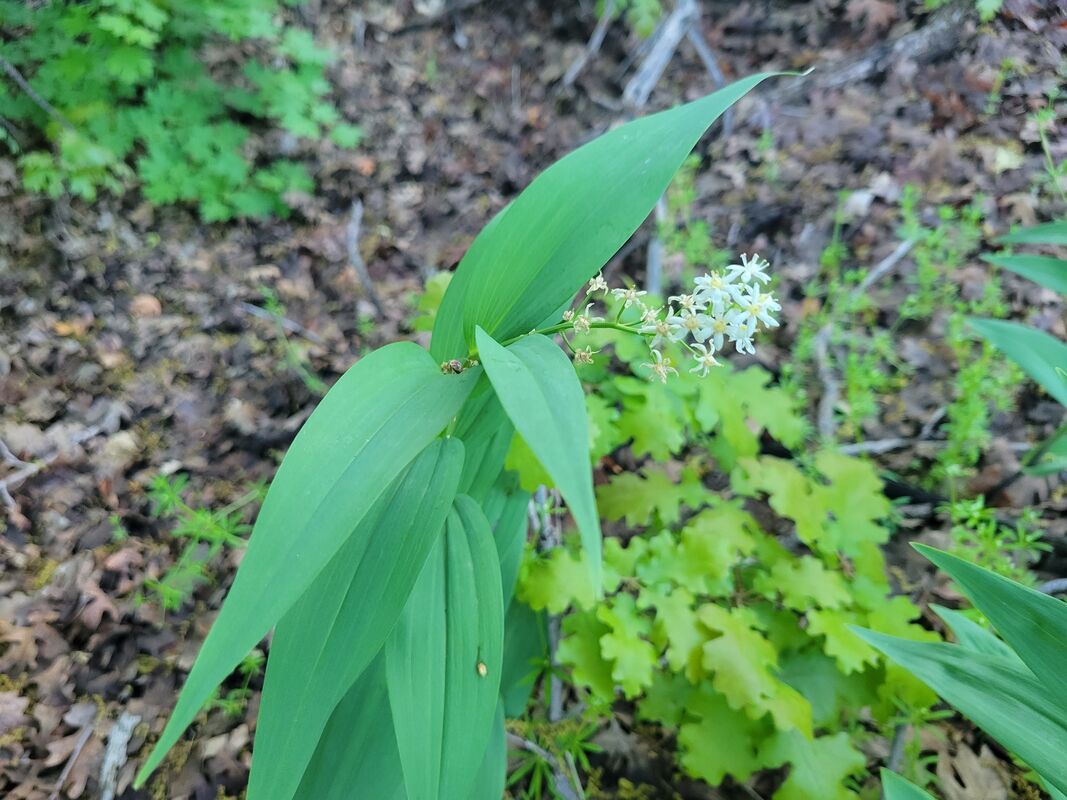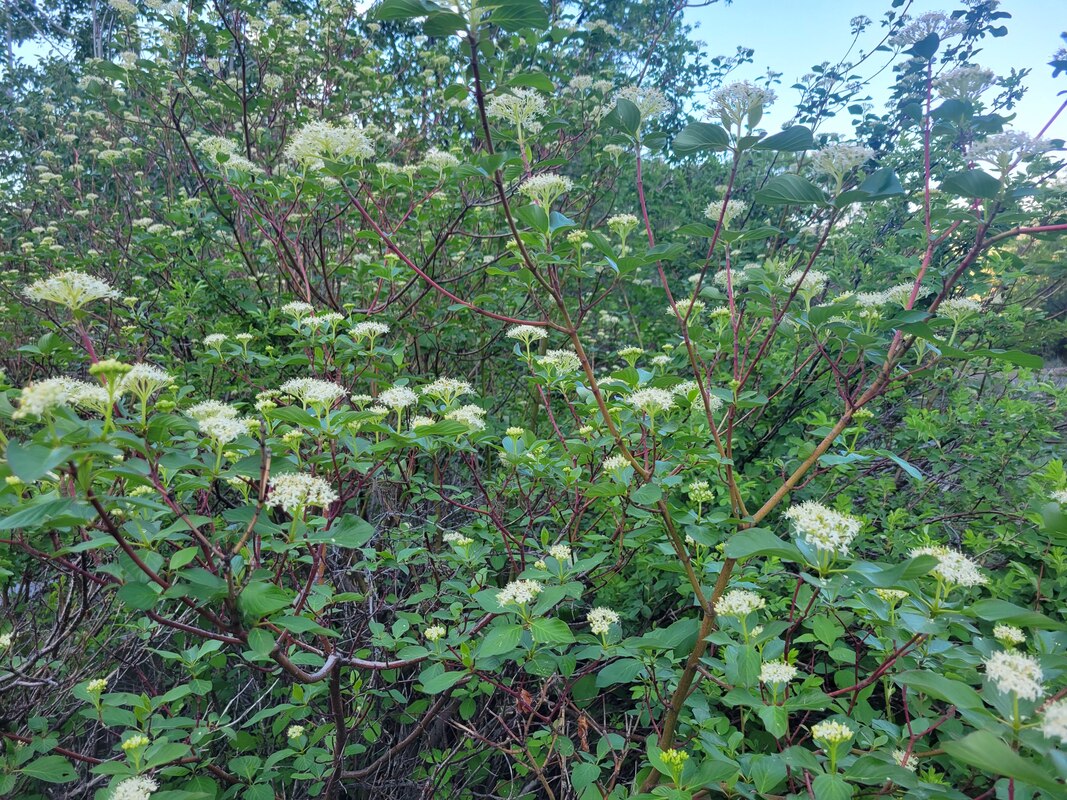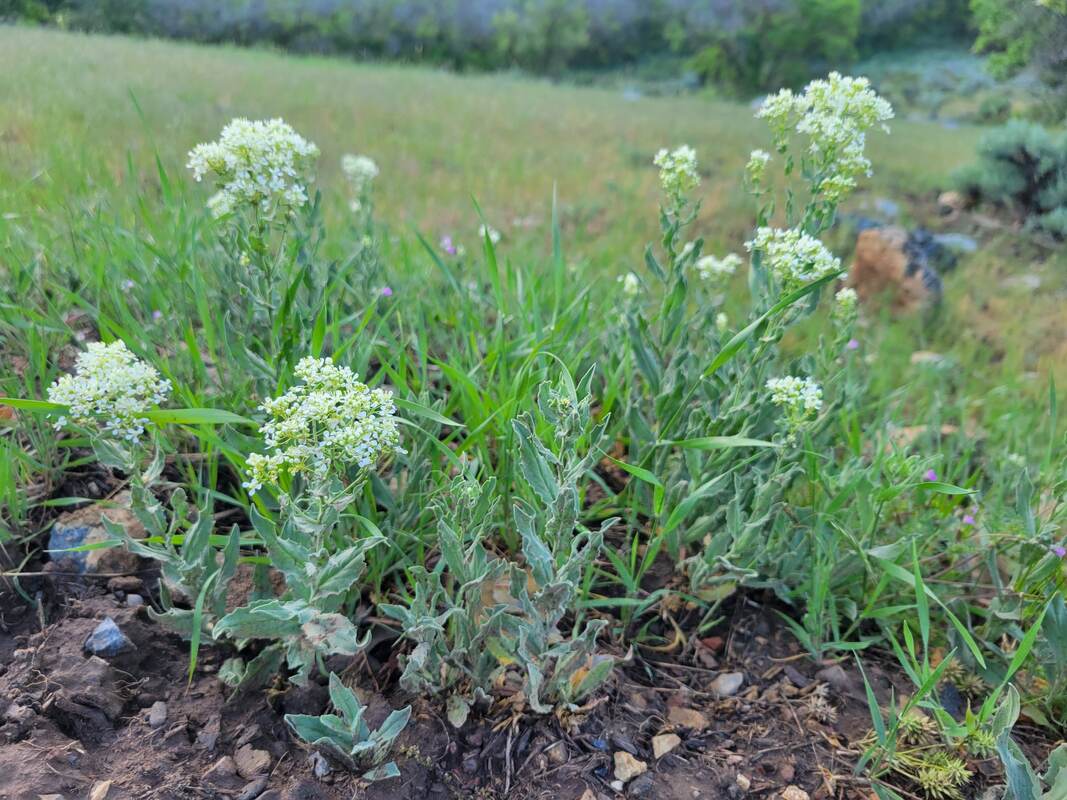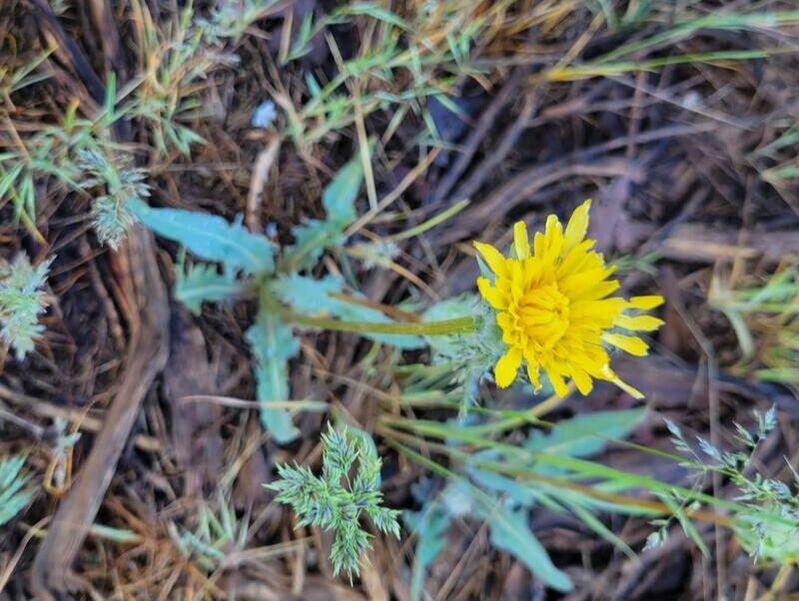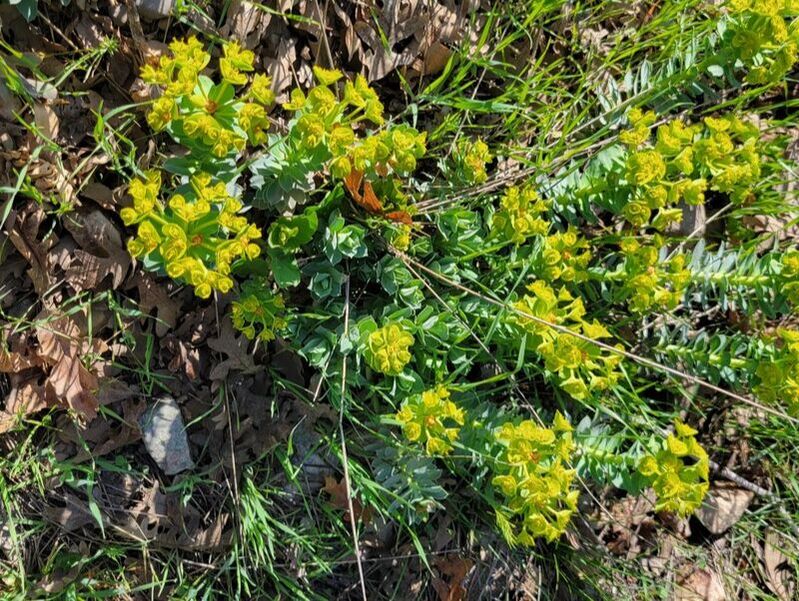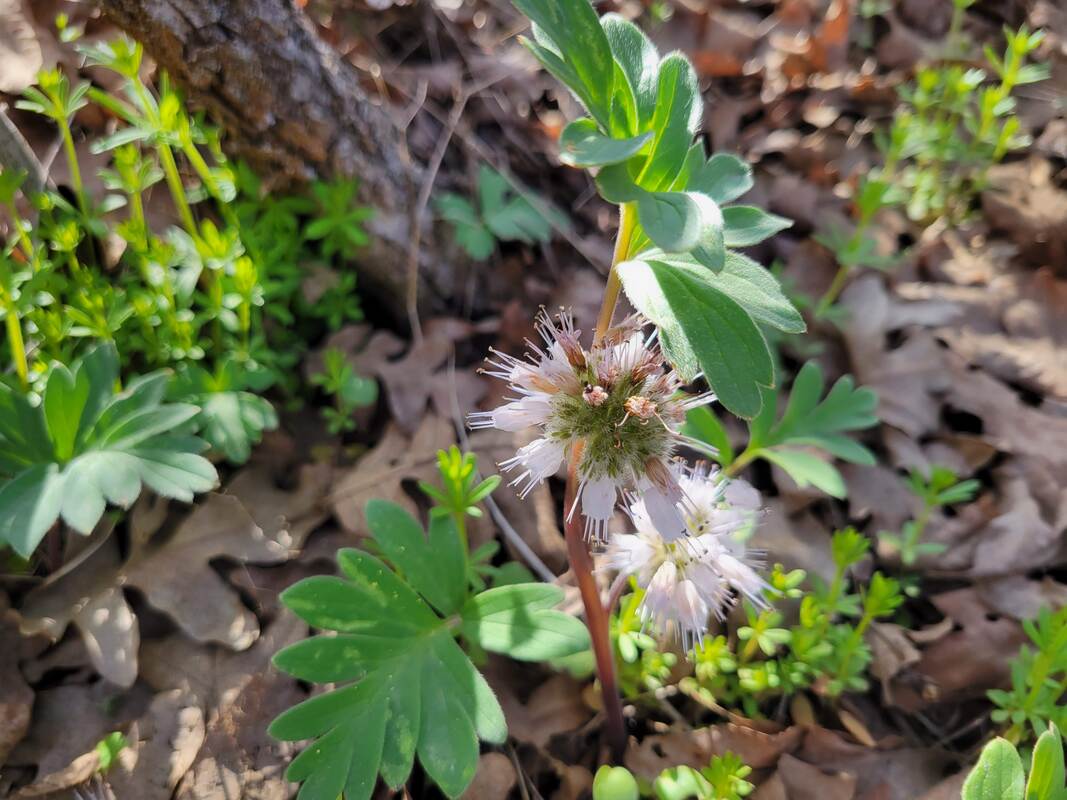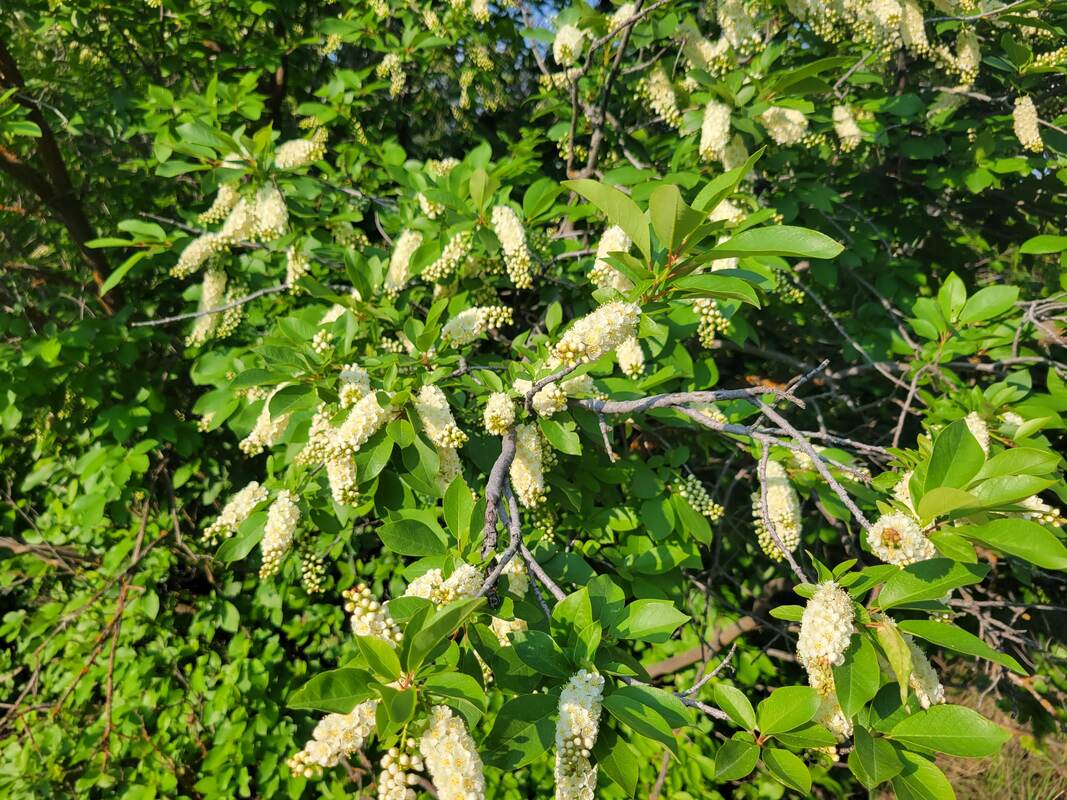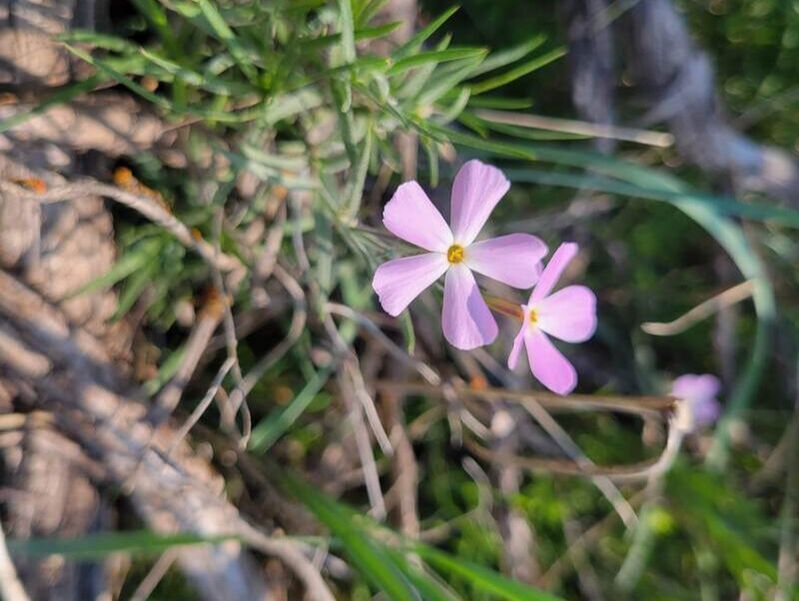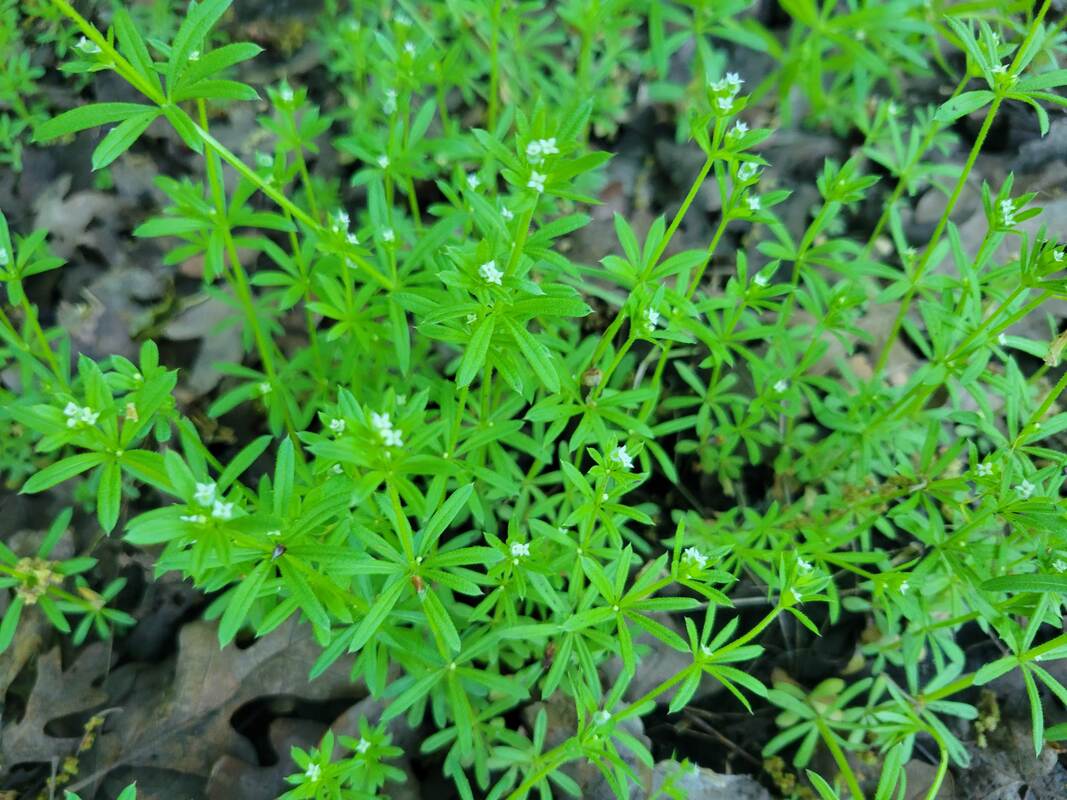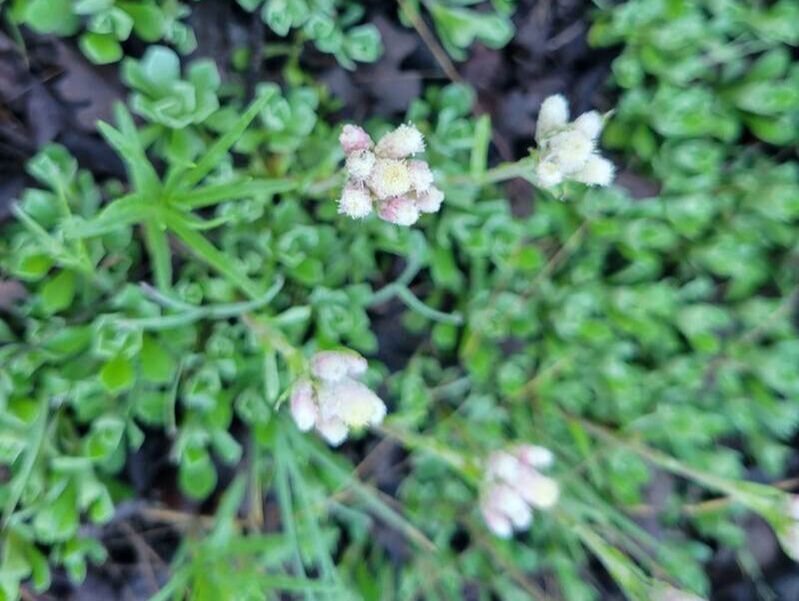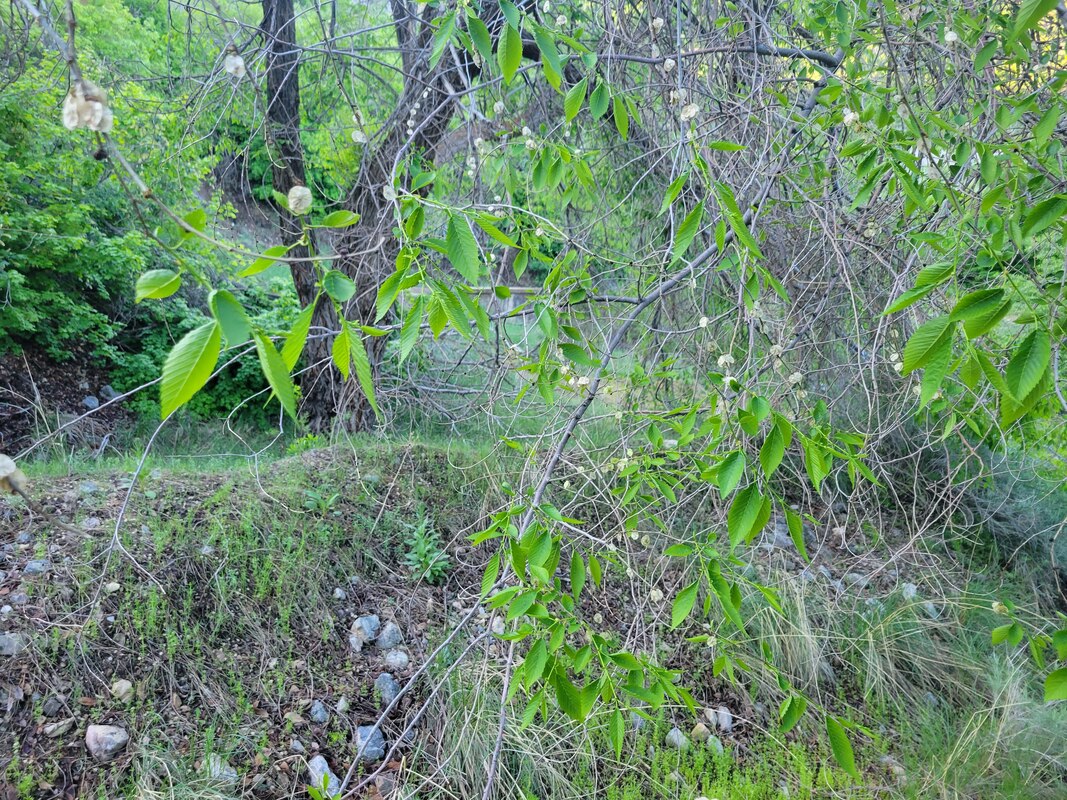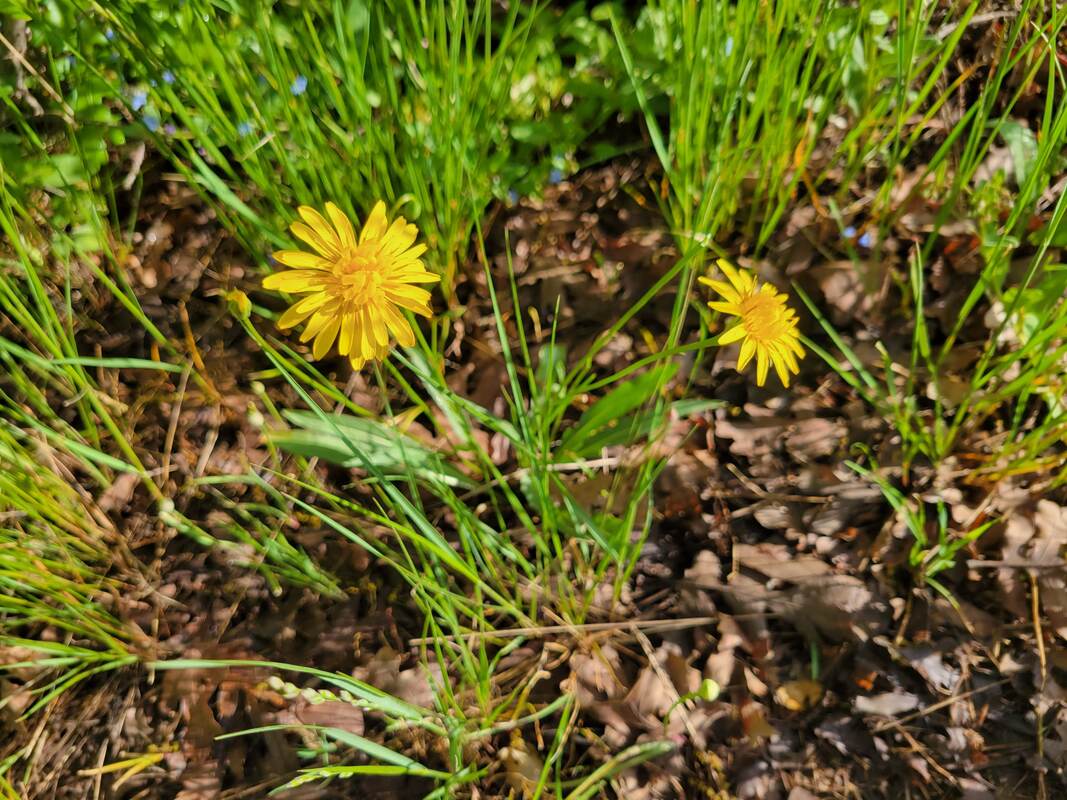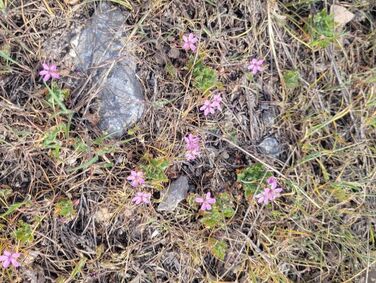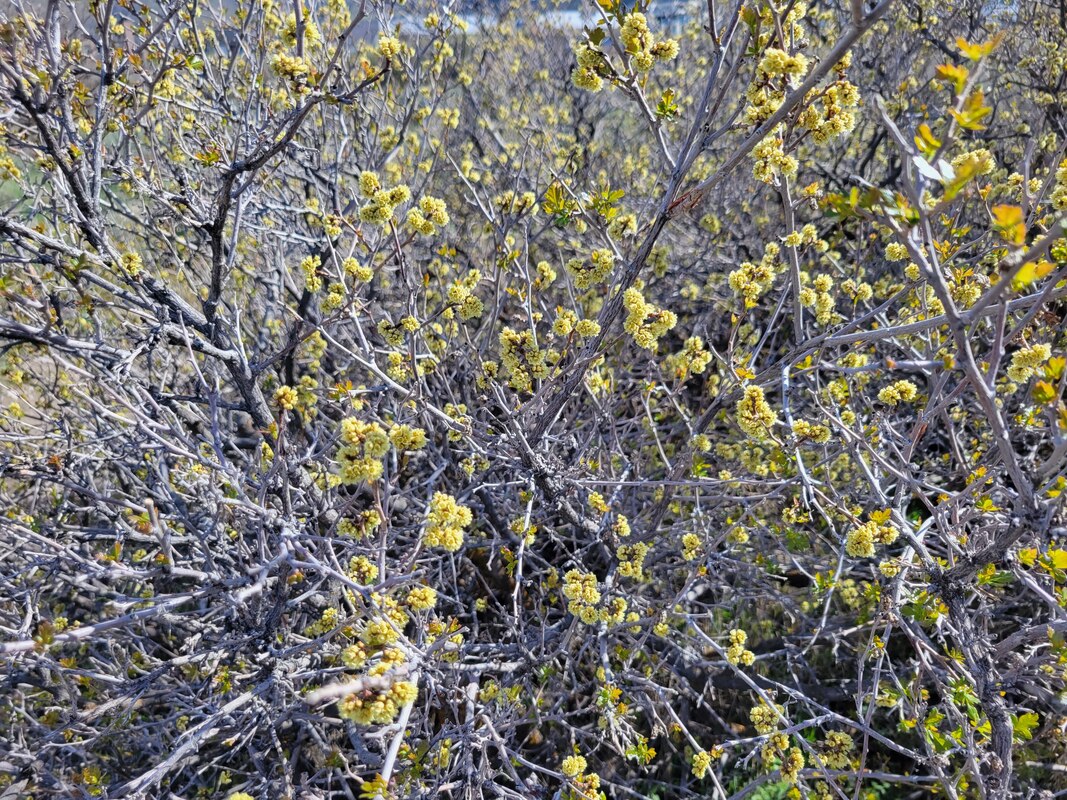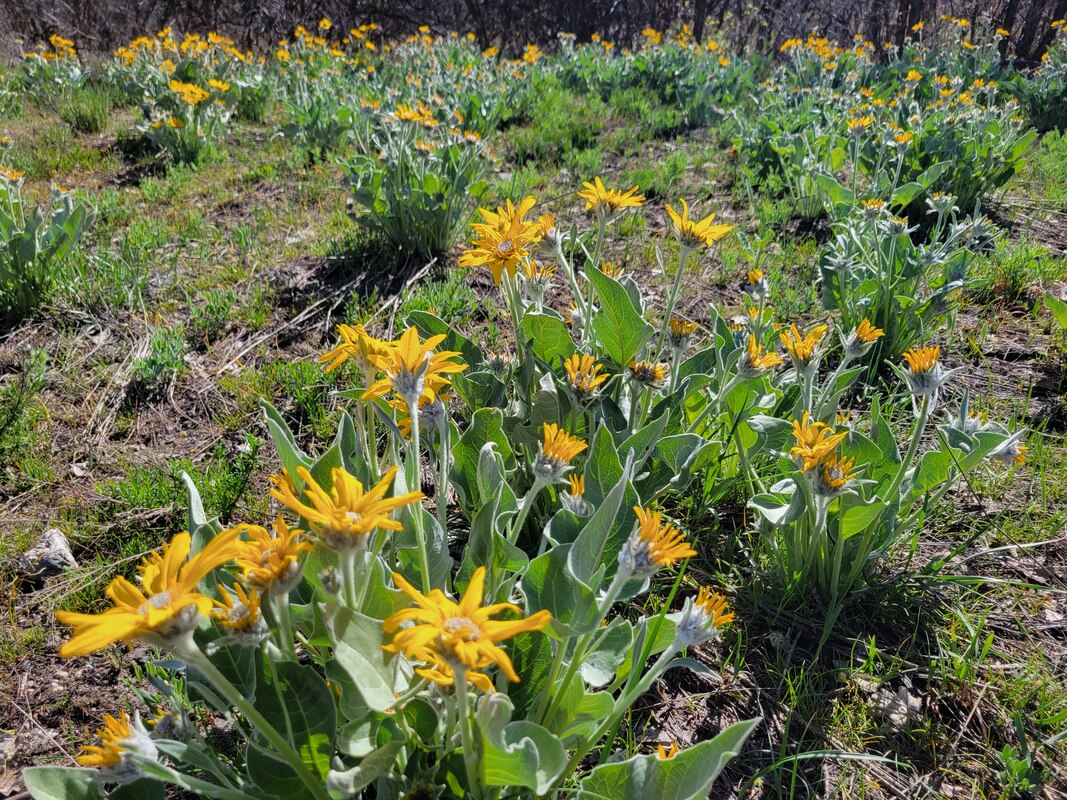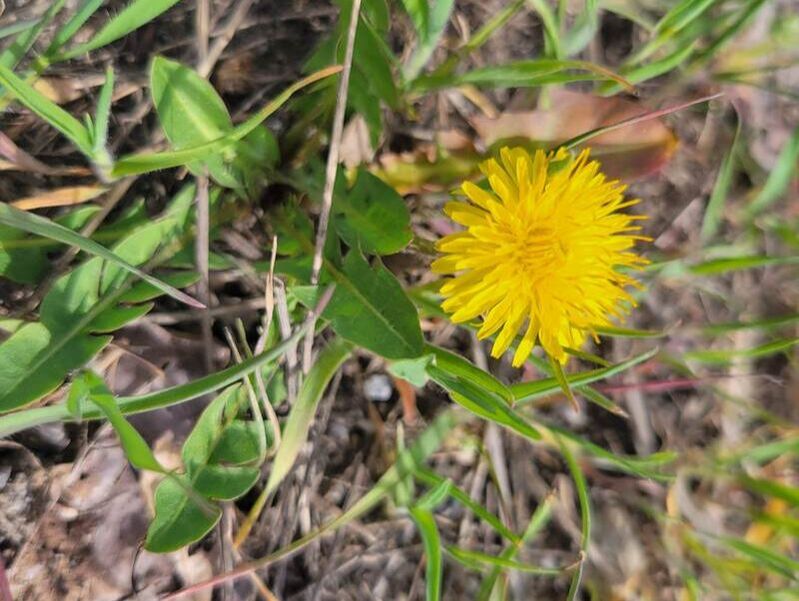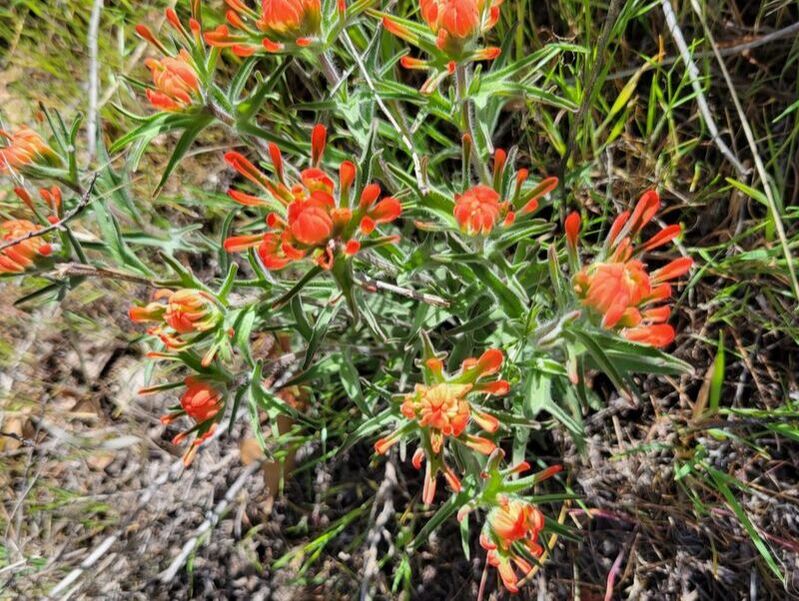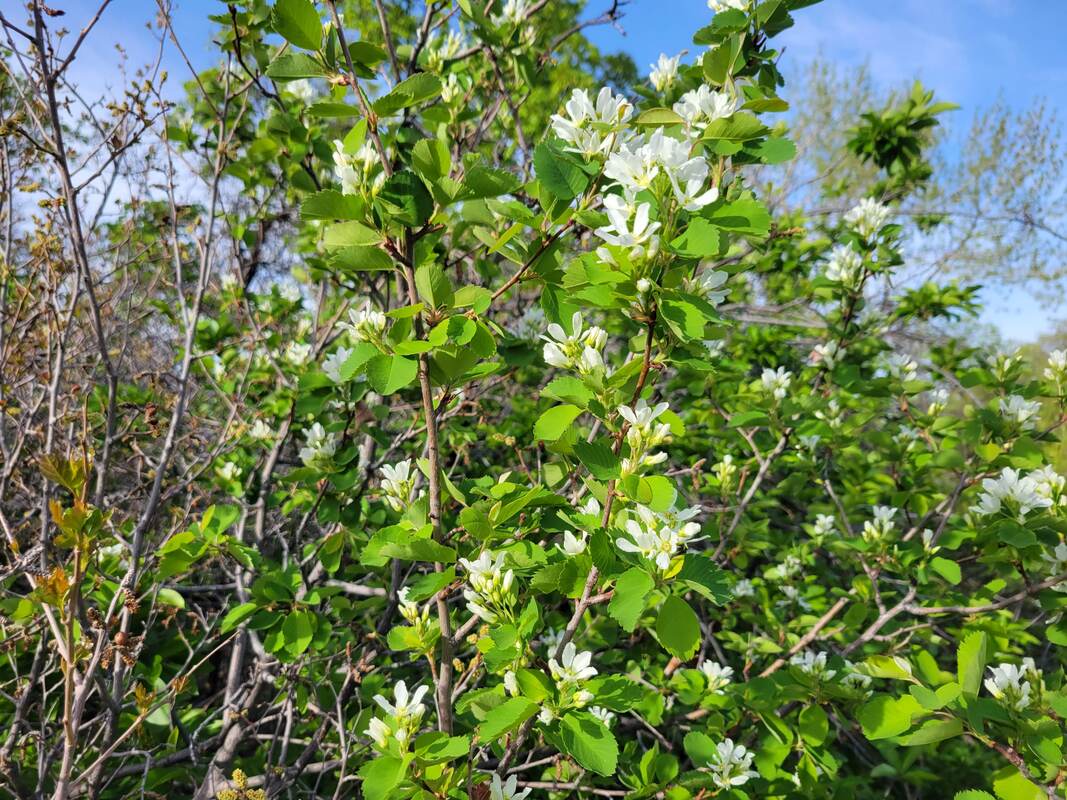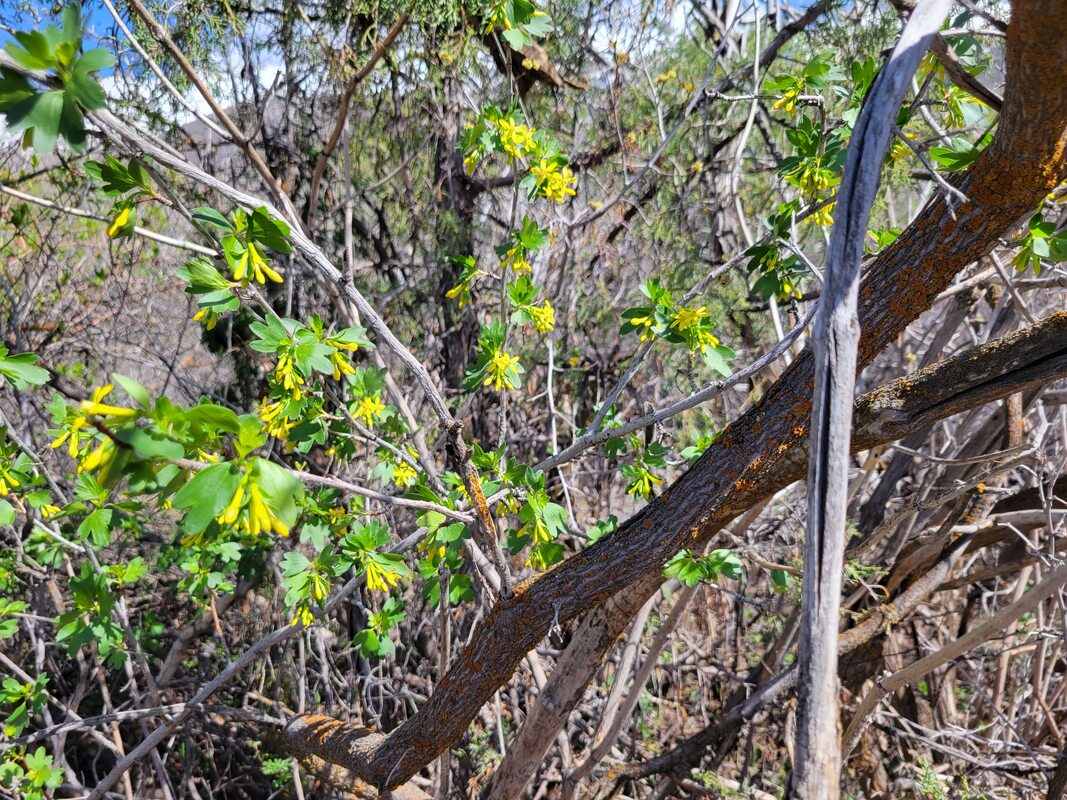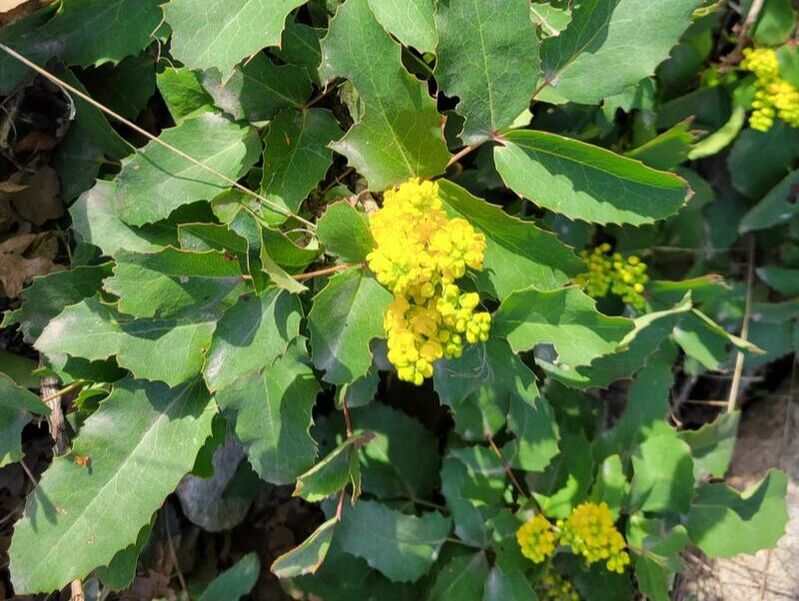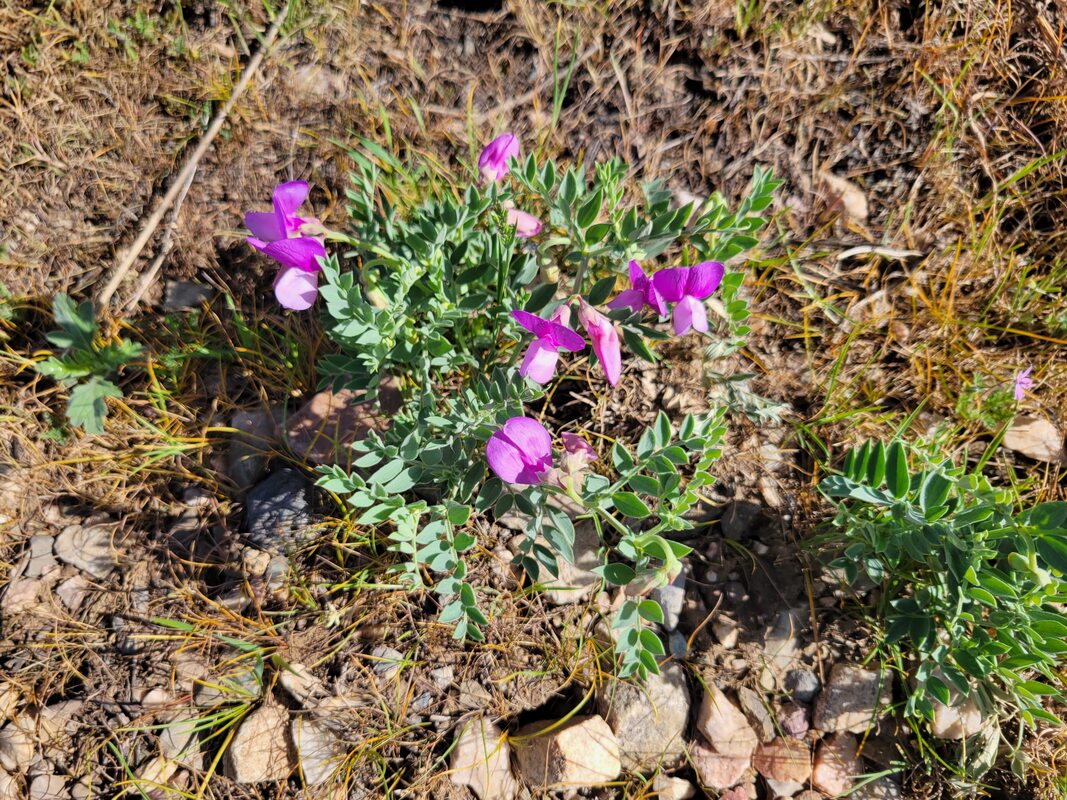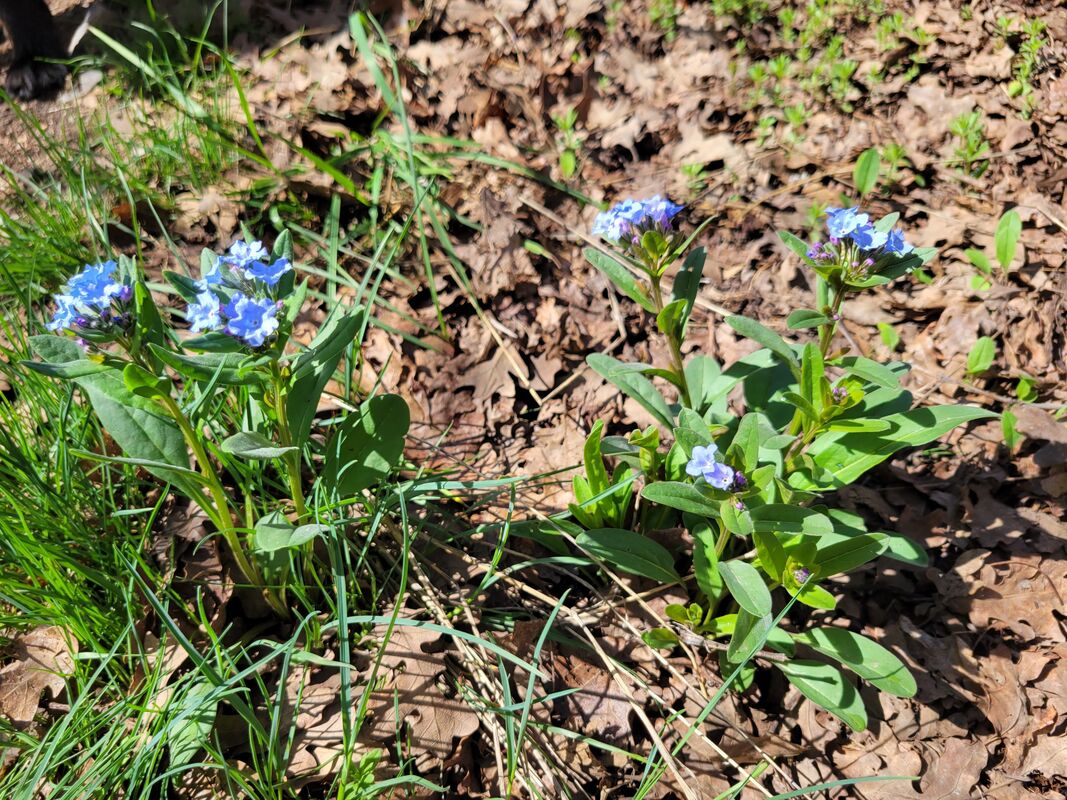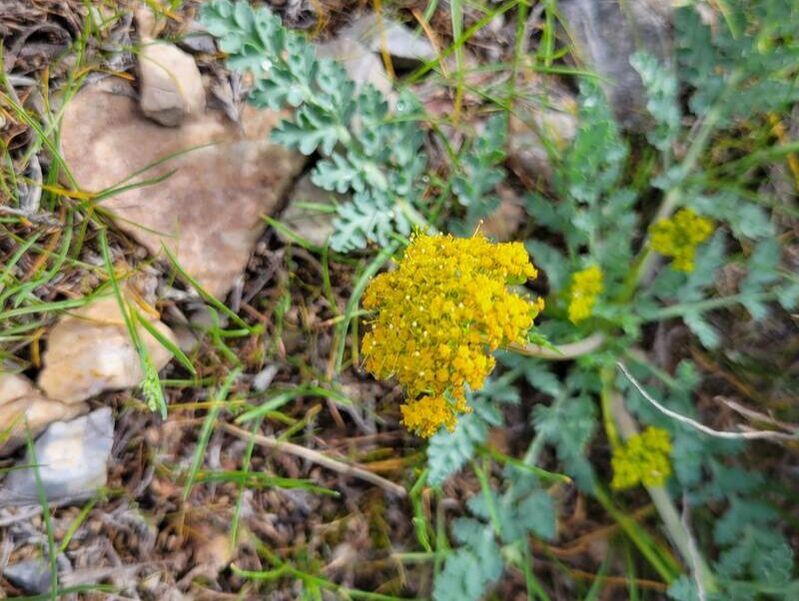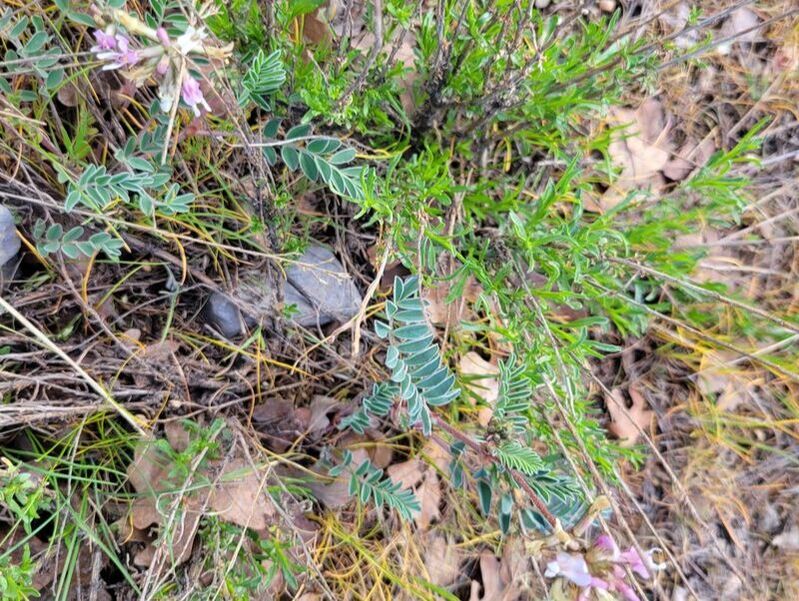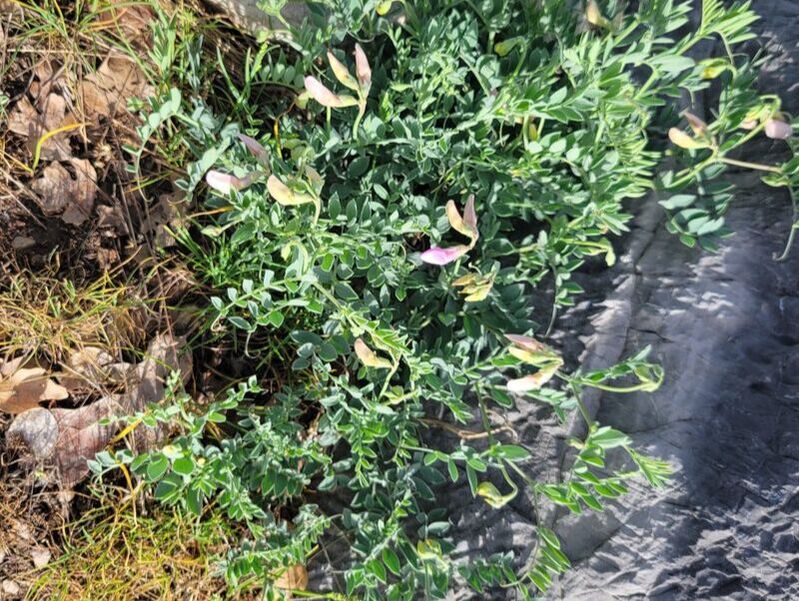The Amen of nature is always a flower.
- Oliver Wendell Holmes, Sr. -
- Oliver Wendell Holmes, Sr. -
Check this page on a regular basis to see what's new and in bloom in Lambert Park for 2023!
|
May 24, 2023
Danger, Danger! The native Death Camas is in bloom! Don't even think about eating a plant with the word 'death' in its name! Every part of the plant, from the bulbs to the stems, to the leaves and flowers is poisonous to humans as well as livestock! Just look at it and enjoy! We'd rather not celebrate the blooming of the dreaded Myrtle Spurge, as it is one plant we would like to completely eradicate from Lambert Park! This succulent, brought over as an ornamental plant from Southeastern Europe and Asia Minor, is extremely drought resistant and thrives in the west. It pushes out native plants and its milky sap is a dangerous irritant to human skin and eyes! Purge it from your yards, but use gloves and plastic bags! The Common Pear is a small to medium sized tree with a broad crown, a straight trunk and arching branches. Its leaves are oval with a pointed tip and fine teeth along their edges. Its flowers have five white petals and purple anthers. They are borne in clusters that open with the leaves in early spring. The fruits are pears with a classic pear shape, widest toward the tip and narrow toward the stalk. Obviously not native to the park - a remnant of an orchard. The Ballhead Waterleaf is a species that’s indigenous to western North America. Native American peoples cooked the crunchy roots and the leaves of this plant, which taste a little like carrots. Lambstongue Groundsel or Ragwort was used by settlers and ranchers to determine range “readiness.” When it was in flower, the range was believed to be sufficiently developed for grazing to begin. The Chokecherry Trees are plentiful along High Bench Trail and Judy Trail. The fruit will become edible, but is very tart! The seeds are poisonous, so spit them out if you eat the berries. Birds love them, and so might you! The berries turn red, then black, and are sweetest later in the season! Spotted Stickseed is also known as the Spotted Forget-Me-Not. It is native to the northwestern part of the United States but has been introduced elsewhere in the country. Long-leaf phlox is native to central and western America. It does well in dry, sandy soils. It's hard to classify by color, as it varies from white to pink to purple. It is exciting to find a Tufted Evening Primrose in bloom, as each blossom only lasts one day! The white flower turns pink as it dies. This pretty white flower with four heart-shaped leaves is supposed to only blossom in late afternoon or evening, as it is pollinated by night-flying insects, but we found this one in the morning. Corn Gromwell, a soft and delicate little white flower has nothing to do with corn, but has recently graduated from invasive weed to a plant with healthy possibilities. Farmers in its native Scotland are growing it for its high concentration of omega 3-fatty acids! It does better than fish oils in this regard! A real boon for vegans around the world! False Solomon's Seal is sometimes called Solomon's Plume. It is distinguished by tiny white flowers with gigantic leaves out of proportion to the blooms! Small Leaf Pussytoes have tightly packed flower heads resembling the paws of a cat. They are also just as soft! The Red-Twig or Western Dogwood grows especially well along river banks, as it does right here in Lambert Park at Grove Spring. While the red twigs add color to the landscape, the clusters of white flowers and white berries also add beauty to the landscape, as well as food for wildlife! The Siberian Elm still has the distinctive papery translucent fruits that bloom in early spring. The papery fruits called 'samaras' are reportedly not only edible, but delicious! Whitetop is classified as an invasive weed in Utah. It came over from Asia and easily crowded out beneficial, native species that provide habitat for animals. It grows especially well under cheat grass in burn areas! Meadow Salsify and its related flowers sometimes are called Jack-Go-To-Bed-At-Noon because they follow the sun in the morning and close up their flowers in the afternoon. They are a native of Europe but can now be found over much of the United States. Yellow Salsify or Goatsbeard is the queen of the dandelion family, with it's green crown-like spikes around the bloom. It is often called goat's beard after it's beautiful large seed head, twice the size of the dandelion! You can make a lot of wishes on it when you blow it apart! |
|
May 10, 2023 The Redstem Filaree, also called Stork's Bill is originally from the Mediterranean, but was already widely distributed in the west when it was observed by John C. Fremont in 1844. Although it can be an aggressive invader of open areas, it can also serve as good spring forage for cattle, sheep, desert tortoise, and other wildlife. Oregon Grape originated in the northwest and is the state flower of Oregon. We're glad it made all the way to Utah, as it's waxy holly-shaped leaves, and bright yellow flowers add a lushness to our landscape. The lemonade trees are starting to bud out! Aromatic Sumac is the most common shrub in Lambert Park. The seeds have a lemony flavor that some hikers like to add to their water bottles. The seeds will turn deep red in summer, but for now, enjoy them in their yellow finery. The Bush Pea is a beautiful purple flower, but don't let your livestock eat it! Many members of the Lathyrus family are toxic to animals, especially horses! Arrowleaf Balsamroot is a hearty plant that was used by native American tribes for food and medicine. It is bitter and pine-tasting. Today we can enjoy it chiefly for it's vibrant spring colors! Another new arrival is the Shortstyle Bluebell. It is found in open to lightly wooded areas and dry meadows in elevations up to 3000 meters in the mountains of the interior West in early springtime. It is common in the Wasatch and Uinta mountains of Utah. It can also be found in the southeast portions of Idaho, and scattered along southern Wyoming and western Colorado from April to June. And, of course, our annual favorite, the Dandelion, is starting to bloom again in the park (and also probably in your yard). A native of Eurasia, the dandelion has been in North American since the early 17th century when the colonists brought it over for medicine and food. The Longstalk Springparsley is a native of the American west and can be found in Wyoming, Idaho and Utah. It is especially common in north-central Utah. The species is hermaphrodite (has both male and female organs). These plants have flowers with what’s called a compound umbel structure, which is sort of like a series of successive umbrellas, ending in a bunch of little florets. Longstalk Springparsley is so small it’s hard to see the floral structure, but if you examine it closely enough, sure enough that’s how it’s set up. The Desert Indian Paintbrush is a deceptive plant. It's leafy red bracts are not the flowers, but rather they surround a greenish white flower at the very tip. They are very pretty parasites! The roots drill into the roots of surrounding plants, stealing their resources! Utah Milkvetch, a native Utah plant, is also found in portions of Idaho and Nevada. It is also called Ladyslipper and Locoweed, the later for its propensity to be harmful to livestock. Some species contain significant amounts of alkaloids and/or toxic metals like selenium. Don't eat it! The Black Hawthorn is plentiful along Rodeo Down, Spring, and the west side of High Bench trails. Beware of the "thorn." It is 1 1/2 inches long and very sharp! The berries (called haws) are not ripe yet, but when ripe they are edible! The seeds contain cyanide (like apple seeds), so it is best to spit them out! The Golden Currant Bush is in it's glory! It's bright yellow flowers will later give way to golden, then orange, then red, very tasty berries! Its scalloped leaves change to deep maroon in the fall. |
